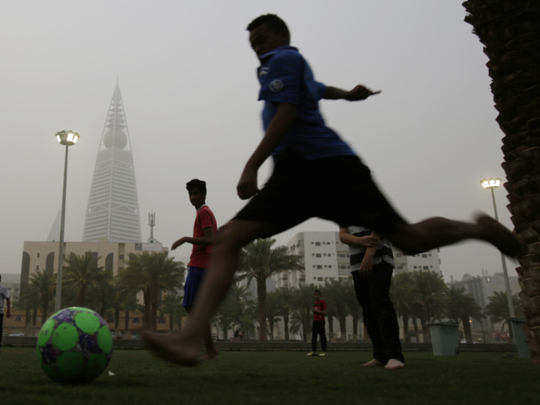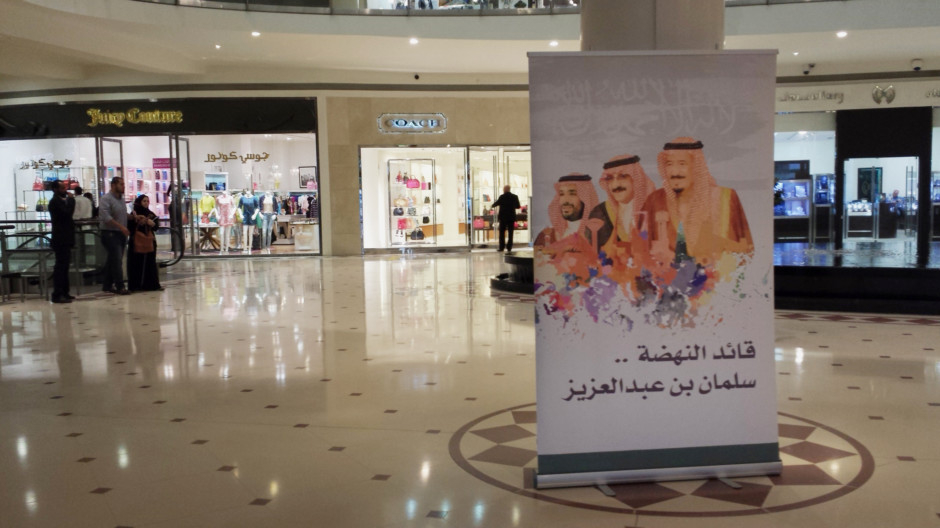
Najran: Khatim Umm Salem’s quiet, secure life betrays no signs of the war taking place just a few miles away.
In the mornings, the elderly woman sits in front of a fan outside her tiny shop in the old market of Najran. In the evenings, she listens to the Quran on the radio. She sleeps with the door unlocked, since all her neighbours know her.
When asked about the war, she shrugs and makes a prayer. As a widow, she receives free health care and the little she needs, 1,000 Saudi riyals (Dh979.12), from the government each month.
“Sometimes I make a profit, sometimes I don’t,” says the Saudi villager, who does not know how old she is.
Saudi Arabia, with about 20 million citizens, is now leading an offensive against the Iranian-backed Al Houthi rebels in neighbouring Yemen. Yet if not for the huge posters and the state media, you would never know this was a country at war.
From the ancient city of Najran to the gleaming, SUV-ridden capital of Riyadh, much of the kingdom continues on its prosperous way, as reflected in interviews with more than two dozen people. One reason is that many citizens are already living comfortably.
In Riyadh itself, there is a sense of pride, of a nation finally coming into its own. The country wants to project a strong image of itself as the backbone of Arab solidarity by leading Arab countries against Al Houthis. It also wants to be in the line of defence against Iran, which has supported militias in Iraq and the government of Bashar Al Assad in Syria.
“There’s support for the war because it came after much indignity from Iran,” according to writer and analyst Abdul Majeed Al Buluwi. He said the Yemen offensive was seen as “revenge for dignity and honour.”
The offensive shows how far this country has come since the first Gulf War of 1990, when the US military defended its borders. Saudi Arabia has now acquired tens of billions of dollars in military equipment.
“Saudi Arabia is in a new stage where it is more outspoken and more aggressive,” Al Buluwi said.
The tacit acceptance of the war also has to do with how it is portrayed. In a capital that is deeply religious, the country’s top clerics have passed a fatwa, or edict, declaring the Yemen offensive as a religious duty.
The kingdom’s powerful business class has rushed to voice support. The Saudi Bin Ladin Group, for example, took out a full-page newspaper ad that included images of F-16 fighter jets and the flag alongside King Salman saluting the armed forces. Solb Steel’s ad spelt the name of King Salman with rockets and a fighter jet, and Saudi Steel pledged “to protect each and every inch of our country even with the last drop of our blood.”
The fighting in the background has not stopped the celebrations have, if anything, been woven into the image of Saudi Arabia in a new era under a new ruler.
The day after the announcements, companies and public figures ran 22 full pages of congratulatory ads in the daily Al Riyadh newspaper, and similarly in other government publications. And in a lavish ceremony this week, the city’s main buildings and palm trees were lit up green, the colour of the flag.
The government is also reaching out to its young, internet-savvy population. The majority of Saudi Arabia is under 30 years old, and can easily turn from state TV programming to a privately-owned Saudi station that beams out US shows like “So You Think You Can Dance” and “Keeping up with the Kardashians.”
The government has swung open its doors to journalists on the Yemen border. The government took both local and foreign press to Saudi troops, and the military held a rare nightly briefing, broadcast live, where journalists could ask questions.
Support for the war is perhaps most passionate in the southern border region of Jizan. This is where some 10,000 tribesmen have volunteered to stand along the border with their own weapons, according to the armed forces. These tribesmen still remember with bitterness the assault on their land in 2009 by Al Houthis, forcing thousands of Saudi farmers to relocate.
Here, the scars of that last war are everywhere. Sounds of sniper fire can be heard in the distance. Homes stand pockmarked and shelled. With the nearest Yemeni village less than a half kilometre away, the border along this mountain range zigzags back and forth so much that mobile phones switch to a Yemeni service provider in some areas.
In Najran, a border town not far away, reactions are markedly different. This is where the most soldiers have been killed in recent clashes with Al Houthis.










